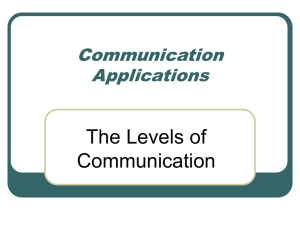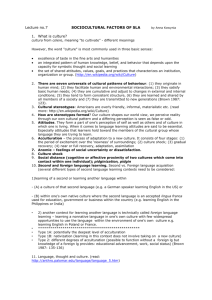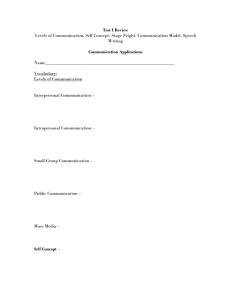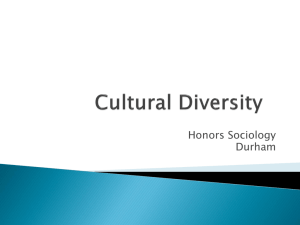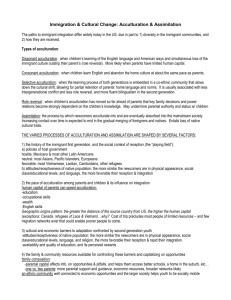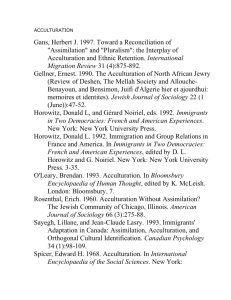Amazon
advertisement
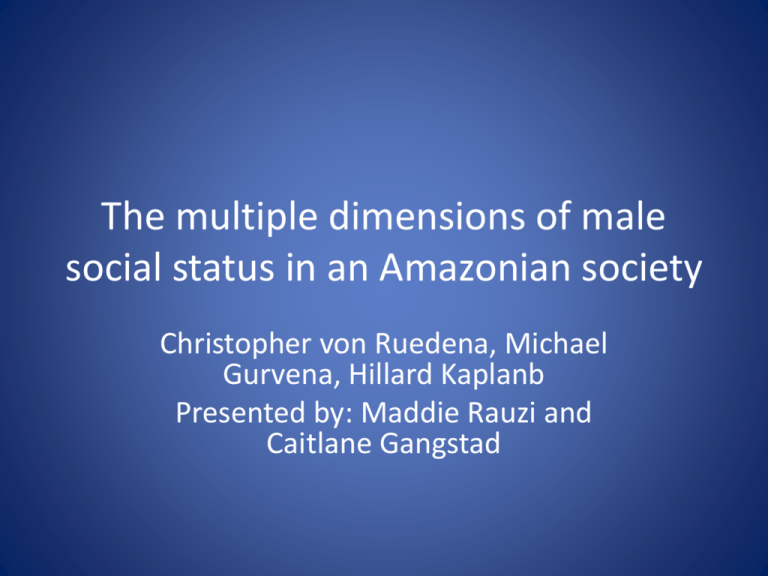
The multiple dimensions of male social status in an Amazonian society Christopher von Ruedena, Michael Gurvena, Hillard Kaplanb Presented by: Maddie Rauzi and Caitlane Gangstad Introduction • Classification by social status is universal in humans. • Certain individuals consume more resources, get better mates, and are central in group decision making. • Women and men compete for social status (This study only looks at men). • Social Status = relative access to resources within a social group • “These individuals have a greater relative ability to inflict costs (i.e., dominance) or confer benefits (i.e., prestige) on others.” • What does this mean? • Status hierarchies can be looked at as “agreements”. • Need not be static Introduction • Humans vs Nonhumans • Nonhumans = status purely from physical dominance, alliances made in order to support this physical dominance. • Humans = Cooperative sharing of food, information, labor, etc. Deference given to individuals that “share the love” – voluntarily share commodities or skills. • Why are there different avenues to acquiring status? Is this seen in modern forager societies? Culture and Economy • Tsimane live in areas of lowland Bolivia • Ton'tumsi-a more acculturated Tsimane village – Some Trismane entrepreneurs buy things in San Borja and resell them to villagers. – Access to public education • ~40% of Tsimane men survive to 60+ • The hunting kill rate peaks at 40 and declines afterwards • Lack intergroup warfare Hypothesis • Proxies for dominance/status: – Success in dyadic physical confrontation – Getting one's way in the context of a conflict within a group – Influence in the context of a community-wide dispute – Respect • Respect-“other people's acknowledgment of an individual's social status: his or her relative ability to inflict costs or confer benefits on others.” Hypothesis Continued • What was measured: – age, physical size food production (hunting ability), level of acculturation (Spanish fluency), prosocial personality traits, social support (number of allies) • Predictions: – – – – – Physical sizewinning dyadic fights Number of allieswinning group conflicts Acculturationcommunity influence Prosocial behaviorcommunity influence Social status will increase until 40’s, then decline, with each proxy declining at a different rate Methods • 57 adult men over 18 out of a 300 person village – 8/57 were unmarried – None had more than one wife • Raters did not overestimate the qualities of family members Methods • Demographic data allowed for kinship analysis • Measured bicep and chest circumference • Men were asked to read a sentence in Tsimane and questioned about fluency in Spanish Methods • Photo ranked other men in the village – Answered yes or no to photos of 16 men • • • • • • • • • Hunting ability Being a hard worker Being funny Keeping promises Trustworthiness Generosity in meat sharing Generosity in lending money Giving good advice How often they visited Methods – Ranked photos of 8 men on: • • • • • Fighting ability Whether the individual gets his way in a group dispute Level of influence in the community Whether the individual is well respected Whether the individual is likely to have more allies in the event of a conflict Results •Physical size and social support winning dyadic physical confrontations •Social support (and physical size) getting one’s way in a group •Social support community-wide influence * •Acculturation community-wide influence •Social support respect •Food-production respect •Food production and acculturation covary •Prosocial all four (when concerning food, then respect) •Note: larger physical size, acculturation, and prosocial behavior associated with social support. Mediating effect. Results •Age does not linearly predict any of the four proxies. Results Discussion • Social support independent than physical size when predicting success in fighting • because a fight could lead to both parties’ supporters retaliating and fighting? • Having more allies actually makes you seem more formidable? • Physical size and social support both important in getting one’s way in a group • an intermediate between dyadic fight and community influence? • Social support & community influence • Probably because sharing decisions that lead to reciprocal altruism lead to strong alliance formations. Discussion • Skills gained through education are becoming increasingly important for influencing the community • - provide exclusive access to knowledge germane to communitywide debates • - increase opportunities to gain and flaunt material wealth. • - gets lots of allies • However, it is hunting that earns you the most respect. (Educated = nouveau riche). • Age does not lend a lot of social influence because of lack of education, when it used to be that shamanism and hunting knowledge was valuable. • “The Tale of Two Leaders” - there seem to be multiple ways for gaining status, and its best to cover all bases. Conclusions Conclusions • High status leads to fitness benefits • - Among the Tsimane, male-status hierarchies are best viewed as multidimensional. • - Dyadic fighting ability is determined largely by physical size, but the ability to get one's way in a group dispute, community influence, and respect arise primarily from social support. • - Even the ability to win a dyadic fight is viewed as indistinguishable from the strength of one's alliances. • - Among the Tsimane, the oldest adults do not wield the most social status. Older men do not have either the physical size or market-related skills, which has eclipsed traditional skills in generating community-wide influence. • - However, hunting ability produces respect whereas level of acculturation does not. • Inequalities in privately held wealth may eventually deemphasize statusleveling norms, leading to “polarization of social hierarchies” (social classes).
